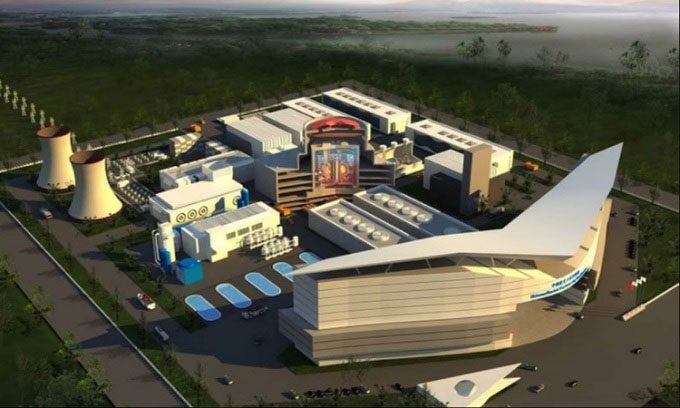A Chinese research team has designed the world’s first power plant that can convert nuclear fusion energy into electricity without destabilizing the power grid.
When completed in 2035, the Chinese Fusion Engineering Test Reactor (CFETR) will generate an enormous amount of heat with a maximum capacity of 2 gigawatts. However, converting heat into electricity is challenging because the reactor needs to pause operations for 20 minutes every 2 hours, according to Xiang Kui, chief thermal system engineer at the Guangdong Electric Power Design Institute of the China Energy Engineering Group. This frequent interruption can create electric surges that pose a significant risk of damaging the power grid, the research team noted in a paper published on May 18 in the journal Southern Energy Construction.

Design of the CFETR reactor. (Photo: SCMP)
China plans to start commercial nuclear fusion electricity generation around 2050, but the fusion power plant will require a distinct design with a wide buffer zone to protect existing energy infrastructure from electric surges. CFETR is a tokamak device designed to harness nuclear fusion energy, capable of generating extremely strong magnetic fields to control hydrogen gas heated to temperatures ten times that of the sun’s core.
When the fusion reaction begins, two hydrogen atoms will merge into one, releasing enormous amounts of energy. However, controlling hot plasma is very challenging. The longest continuous operation recorded for this type of reactor has not exceeded 2 minutes. Based on the rapid advancements in fusion technology in recent years, Chinese scientists estimate that within a decade, they could extend the stable plasma maintenance time to several hours. However, if the plasma becomes unstable, the reactor will need to pause and cool down before restarting.
Xiang and his team’s solution involves using a thermal reservoir. According to their design, helium gas will transfer heat from the reactor to a reservoir filled with molten salt. As the total energy in the reservoir gradually accumulates, the temperature of the salt will rise to 600 degrees Celsius. The molten salt will then be pumped into a heat exchanger to boil water and operate a turbine to generate electricity. This process is more complex than that of most current power plants, and some energy will be lost in the heat exchange equipment. However, this solution effectively eliminates electric surges and facilitates the connection of the fusion reactor to existing electrical infrastructure.
An ideal fusion reactor needs to operate continuously for months or years. By connecting CFETR to the power grid, China will become the first country to use “artificial sun” technology to produce usable energy.
China introduced CFETR in 2017 as a continuation of the International Thermonuclear Experimental Reactor (ITER), the world’s first nuclear fusion reactor currently under construction in France. Initiated in 2015, ITER is designed to operate for 10 minutes to demonstrate that the fusion process can produce more energy than it consumes. The CFETR will advance further by commercializing the heat generated by the fusion reactor.




















































